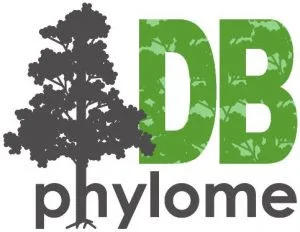
ERGA Phylomes Initiative
Call for Collaborative Projects Proposal
Introduction
In order to support the European Reference Genome Atlas (ERGA) project, and facilitate obtaining relevant biological insights through comparative genomics analysis, PhylomeDB database has launched the ERGA phylomes initiative, by which we offer collaborative partnership to groups that have obtained an annotated ERGA reference genome. We offer an evolutionary analysis of the newly sequenced genome and other sequenced species of interest by reconstructing and analysing a phylome of the species.
Phylomes are complete collections of phylogenetic trees for all genes encoded in a genome and as such they represent the evolution of a species as seen by each of their genes. By studying the different phylogenetic trees we can obtain information regarding the different evolutionary mechanisms that have affected a species of interest such as duplications and losses. We will also obtain a phylogeny-based catalogue of orthology and paralogy relationships between the species included in the phylome and link this information to functional annotations (See examples of previous collaborations below).
What information do we need to build a phylome?
- We will need a single fasta file containing the proteome of your species. If isoforms are present we need the gff file that relates protein codes to their gene codes. This information can also be convenient as it allows us to extend the analysis to include information about gene order.
- A phylome is always constructed in the context of a set of species to which we want to compare. Indications about the taxonomic scope of the phylome are needed to be able to approach the project in a reliable manner. At the proposal level it is enough to describe the taxonomic scope (e.g. across vertebrates) and/or name a few of the species you need to include to address the biological question.
What will you obtain?
The result of a phylome in its rawest form is a catalog of phylogenetic trees that can be then analysed. This dataset will be publicly available and browsable through our webserver. Our standard analysis pipeline includes inference of phylogeny-based orthology and paralogy, detection and relative dating of gene duplications, and phylogenomic reconstruction of species tree. From then on we have experience in mining such rich dataset to enquire about other questions related to the evolution of the genome.
Possible inferences include but are not limited to: detection of selection signatures, detection of non-vertical evolution signals such as lateral transfer or hybridization, detection of conserved gene clusters, etc. We offer to collaborate with the selected groups to facilitate the analyses in order to study how individual genes have evolved and how they shaped the evolution of the species of interest.
Examples of such collaborations:
- Iberian lynx: Genome Biology Article
- Pea aphid project: PLOS Biology Article
- Cotton rat project: BioRxiv Article
- Little skate project: Nature Article
How to apply?
Fill in this Google Form with the requested information:
- Genome description and interest. (limit: 500 words)
- Abstract for the proposed project (i.e. questions that want to be addressed with the phylome, potential for future use by the community, etc) (limit 500 words)
- Taxonomic scope (description of other relevant species/groups for comparison, ideally a list of species with available genomes)
- Brief Description of the team (limit 500 words)





